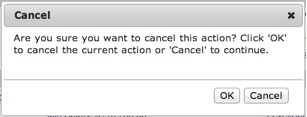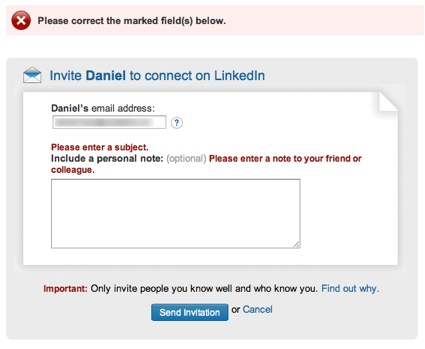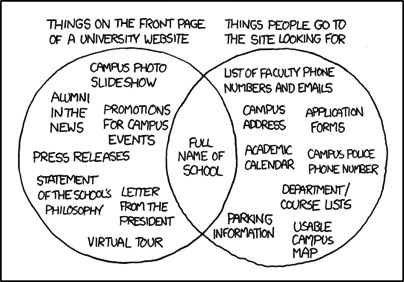Single sourcing, according to the ubiquitous Wikipedia, is a “content management method which allows the same source content to be used across different forms of media and more than one time.” (http://en.wikipedia.org/wiki/Single_source_publishing). The benefits are obvious: the maintenance and editing of the source content have only to be done in one place at one time, thus making the editing process more efficient (quicker) and less prone to error. Most technical writers have become single source evangelists because we don’t want to spend our time editing the same piece of content in exactly the same way in several different places. It’s boring, it’s inefficient, and it’s expensive. Root canal surgery (with the right anesthesia) would be preferable.
Tag: tehnical writing
T.S. Eliot dedicated the “The Waste Land,” arguably one of the most important poems written in the 20th century, to Ezra Pound for his timely edits. According to Richard Ellman, Pound persuaded Eliot to remove several poems that Eliot had inserted between the stanzas of “The Waste Land.” As Pound said, “the longest poem in the English langwidge [sic]. Don’t try to bust all records by prolonging it three pages further.” (From “The First Waste Land.” In Eliot in His Time: Essays on the Occasion of the Fiftieth Anniversary of The Waste Land.” Princeton, Princeton UP, 1973.)
Recently, a prospect called us about a training guide he needed written for a new enterprise application his company had recently purchased and was trying to implement. Unfortunately, he had already paid the company that developed the application to create training materials but found, once he had a chance to review the materials, that they were not only impenetrable and useless from a user’s point of view but mostly incorrect as well. A complete waste of money. Alas.
Technical Writing for the Cloud
By: Eric Sedor
Eric Sedor, a frequent contributor to the Shoap Technical Reader, is a senior software engineer at MongoLab, a cloud-based database provider located in San Francisco. Eric cut his technical writing teeth at Shoap Technical Services before returning to his true passion, software engineering.
The Cloud encapsulates the idea of a distributed system built of formable, destructible, re-creatable components. Even the data within cloud systems is redundant and spread out, capable of being restored in parts to specific points in time, if necessary. Cloud systems even overlap one another.
Wikipedia defines single sourcing as “a content management method which allows the same source content to be used across different forms of media and more than one time. The labor-intensive and expensive work of editing need only be carried out once, on only one document. This reduces the potential for error, as corrections are only made one time in the source document.” A decent, I think, explanation of what this mysterious approach to documentation is all about.
Many companies labor under the incorrect assumption that keeping certain functions (like technical writing) in-house gives them the greatest return on investment. Not true. Here’s why.
From touch screens of various sizes, to Microsoft Kinect™, Google Glass, Fitbit, and Square, we’re seeing a panoply of new devices that broaden both what technology can do and how we interact with it. This explosion of new interaction technologies has even created a bit of a hiring frenzy for interaction, user experience designers, and human computer interaction specialists whose job it is to design how exactly we are going to get all these new toys to do what they are supposed to. Dreaming up fantastic new ways to interact with all this fancy technology is one thing, but how do those dreams become applications, and how do people know how to use them once they get them?
When was the last time you used an application that was just impossible to comprehend?
<!–more–>
Or that you visited a web page that made it hard to find what you were looking for?
I’m guessing you don’t have to rack your brain too hard to come up with an example. In fact, if you’re reading this at work, you might very well have opened our newsletter just to take a break from the confusing enterprise software you’re stuck using for your job.
The Science Behind the Suck
During World War II, Army Air Force scientists noticed that changes in cockpit design often had disastrous effects on pilot performance. When the mental and physical capabilities of pilots did not align with the design of the aircraft, pilots were much more likely to make a mistake. Considering these “human factors” as part of the design turned out to be an important safety and performance issue. This insight led to a new science that linked human psychology to product design.
Fast forward to 1990s. Computer software starts to become mainstream. No longer the realm of the most technical users, human capabilities and product design started to clash again. Building on what the Human Factors researchers had learned, the science of usability engineering took off to meet the challenges of software design.
Some of the important human characteristics that must be considered include:
- People have limited working memory capacities
- Attention limits the ability of our minds to process only so many thoughts and inputs at once
- Our eyes are drawn to salient features
- We mentally group things in predictable ways
- Our perceptions are colored by our experience and expectations
So how do you use this knowledge to make digital products that don’t give people fits? I’ll give you a hint: you’ll have to do a little more than add a line that “the application will be designed with usability in mind” to your requirements doc.
User-centered design is an approach to designing and developing software that results in applications and websites that are easier to use and better meet the needs of users.
What Is User-Centered Design
It starts by putting users at the forefront of design decision making. That’s what user-centered design is all about. Through research, observation, iterative design, and usability testing, we can understand the needs and behaviors of our users and use our expertise as designers to craft products which are useful, usable, and pleasurable to the users.
A typical user-centered design process would go something like this:
- Analysis – Identify the characteristics of the users, user goals, context of use, and business goals. Talk to actual users and business stakeholders.
- Design – Create mockups or lo-fi, low cost prototypes of the solution based on the information gathered in the analysis phase.
- Testing – Test your mockups or prototypes with actual users to determine what works and what needs to be improved. Iterate on the design and testing phases to improve the process and move closer to …
- Development and Delivery – Building as you iterate through the test and design phase, you’ll approach higher fidelity until you’re ready to complete the development and delivery of your project.
- Evaluation and Lifecycle Management – Evaluate the success of the project against the characteristics defined in step 1 by measuring the behavior of actual users. Continue to ensure the product is updated using user-centered principles throughout the lifecycle.
Noticing a theme?
Why Is That So Important?
In the realm of ecommerce, the consultants User Interface Engineering used user testing to discover a usability flaw that was costing a major retailer $300M in lost revenue (http://www.uie.com/articles/three_hund_million_button/). When designing products, Jakob Nielsen estimates that spending 10% of a project’s budget on usability doubles the quality metrics for the project (http://www.nngroup.com/articles/usability-101-introduction-to-usability/).
When designing intranets and enterprise applications for internal use, your users may not have somewhere else to turn. In those cases, you don’t have to worry about losing customers. But poorly designed applications can cause all sorts of problems.
- Employees are less efficient at their jobs when the tools they need are hard to use.
- Confusing interfaces may cause employees to make costly errors.
- Users blame themselves when they have trouble using an application, so having to spend the day using a suite of poorly designed applications leads to unhappy workers and lowered employee morale.
But We Don’t Have Designers! How Can I Get Me Some Of That User-Centered Design?
While you may not have designers, someone does design every application. It may be a business analyst or product manager doing mockups in Visio or it might be the developer turning user stories directly into front-end code. Inadvertent design is still design.
You don’t have to bring in an expensive agency or hire a team of User Experience Designers when you’re just starting out. The best way to improve the user experience of your products is simply to watch your users use your product.
User Interface Engineering has a list of excellent ways to start your user research (http://www.uie.com/articles/starting_user_research/).
Further Reading
If you’re interested in learning more, I suggest starting with the following books:
- Don’t Make Me Think by Steve Krug – The classic introduction to designing websites and applications for usability. Quick and easy to read, it’s a must read for anybody involved in product work.
- The Design of Everyday Things by Donald Norman – Norman is a pre-eminent cognitive psychologist and designer. Norman goes more in depth into the psychology of design than Krug, but this book is still quite accessible.
After an eighteen year career in technology, I have one thing in common with many of my colleagues: we have children. Eating lunch or grabbing a coffee I am frequently asked “What should my child do to get a job in technology” and “What did you major in?” and “I heard about a computer camp where kids make games. Is this a good idea?”
I have little recollection of how I decided to become a technical writer. I’m not even sure how I found out that technical writing was a thing people did. I followed some roommates from college to Atlanta from Connecticut in the fall of 1993. I was a pretty good writer and I had always been a “computer nerd.” Today that might conjure up visions of Red Bull fueled hackathons. When I was growing up it meant reading operating system manuals. For fun.




